Kalmia latifolia
Pennsylvania state flower, an early summer's beauty
Kalmia latifolia mountain laurel
We cannot let this spring pass without a look at Pennsylvania’s state flower and its showy flowers. This showy thicket-forming native shrub has pointed oval leaves that are shiny, leathery and evergreen. The leaves change from light green to dark green to purple as the season progresses. As the shrub matures the wood becomes twisted and gnarly.
The flower clusters are bowl-shaped and are made of many small white to pink flowers in the shape of cups. There are often purple or rose-colored markings inside. Each of these flowers has five petals fused together and ten anthers that form arching spokes from the center of the flower to ten pits in the sides. Each individual flower is about one inch in diameter while the cluster can be up to six inches across. The stamens have a spring like mechanism that spreads pollen when triggered by a bee. This pollen may be spread as far as 15 cm by this mechanism. The buds have strong ribs.
The flower stems are sticky to exclude crawling insects. Moths and bees both serve as the major pollinators. The shrub can grow 13-15 feet high, though it is often smaller. Mountain laurel is found in rocky or sandy woods.
It can also be found in cool meadows, balds, mountain slopes and woodland margins. It is found growing wild in most of Pennsylvania except the far northwest, but is far more common in the mountains and northern forests than at lower altitudes. It is commonly planted as an ornamental and there are cultivars that have bright red flowers.
Mountain laurel blooms from May to July depending on location and local weather. Sometimes it will take the form of a small tree with a single short, crooked trunk. The wood has been used for tool handles or spoons, and the burls, or hard knot-like growths, for briar tobacco pipes. All parts of the plant are toxic.
Habitat & Range
Dry to moist, acidic woods and slopes.
Present throughout most of the state, except two counties in the northwest.
Range: Found in Rocky or sandy woods from Indiana, Ohio, Pennsylvania, New York, New England and South.
| EMP: | FACU |
|---|---|
| NCNE: | FACU |
Phenology
Flowers late May to early July.
Characteristics
Flowers bell-shaped, white to pink with deep rose spots inside. Occur in flat-topped clusters.
Leaves oval and glossy, change from light-green to dark-green as the year progresses.
Plant Codes
S-rank: S5 (Secure)
G-rank: G5 (Secure)
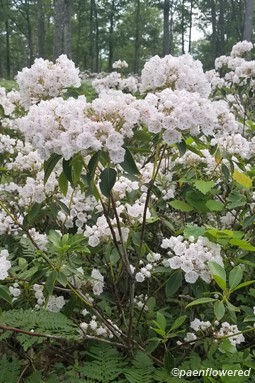
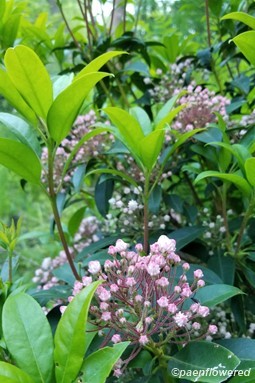
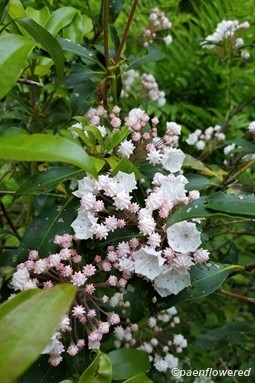
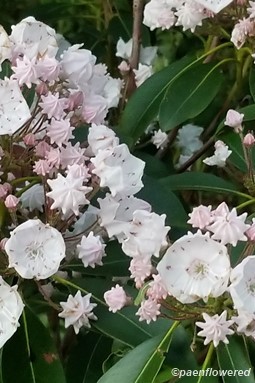
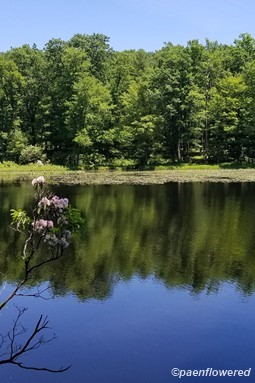
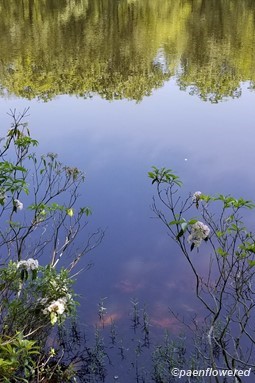
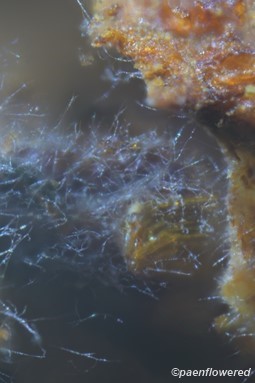
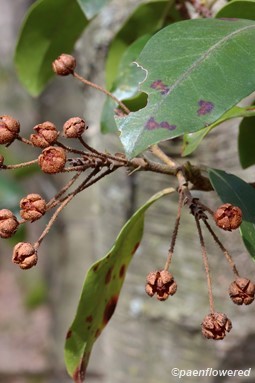


Comments
Have you spotted this plant in your area? We'd love to hear about your experience! Share your comments or questions about the plant below. Comments are moderated before posting.